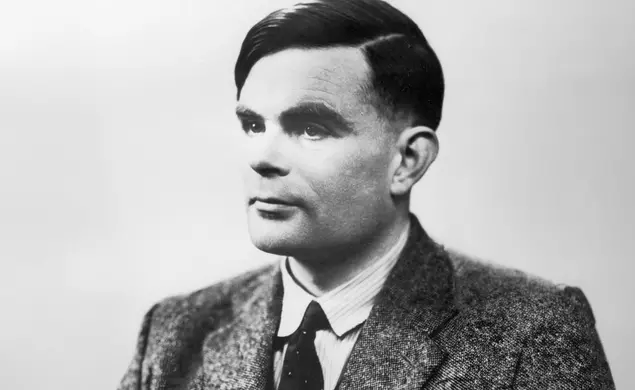
As a child in England, Alan Mathison Turing was cheeky and tantrum-prone. Often ink-smudged and reeking of chemical experiments, he was not so much disobedient as perpetually bewildered that he was expected to conform to society’s expectations.
Turing, born in 1912, would turn out to be one of the most brilliant minds of the century — conceiving, as he did, of the modern computer decades before it came into existence. But his independent character was a source of endless exasperation for his teachers. He was impatient, his work was sloppy, and since he would expend effort only on those subjects that interested him, he nearly failed English and Latin. “He is the kind of boy who is bound to be rather a problem in any kind of school,” sighed his boarding-school headmaster in a progress report.
As his brother John put it in Andrew Hodges’ masterful biography, Alan Turing: The Enigma: “You could take a safe bet that if you ventured on some self-evident proposition, as, for example, that the earth was round, Alan would produce a great deal of incontrovertible evidence to prove that it was almost certainly flat, ovular, or much the same shape as a Siamese cat which had been boiled for 15 minutes at a temperature of 1,000 degrees Centigrade.”
Turing went on to study mathematics at King’s College, Cambridge, and, after a long-distance run one afternoon, he lay down in a meadow to ponder. By the time he got up to run back, he had worked out a new definition of computability. Without consulting his mentor, or anyone else for that matter, he sat down and wrote “On Computable Numbers,” which conceived of abstract “machines” that function much like modern computers. The year was 1936. At the time, of course, actual computers did not exist. Turing was 23.
It turned out that someone older and more respectful of precedent — Princeton professor Alonzo Church ’24 *27 — recently had come up with a definition of computability that was mathematically equivalent to Turing’s. But Turing’s approach, more concretely definitive than Church’s, was the more original and enduring.
Worried that Turing’s propensity to work in isolation might stunt his intellectual growth, his adviser arranged for him to study at Princeton with Church. Arriving on campus, Turing did not cut much of a profile. Few attended his first talk at the Mathematics Club in Fine Hall. When his seminal paper was finally published the next month, few fathomed its revolutionary importance; only two people asked for reprints.
Turing started to build a working model of his imaginary computer at Princeton, using the physics department machine shop to fashion some relays for switches. The fruits of this effort are unclear. He was far better with abstract machines than with real ones. When a friend sold Turing his 1931 V8 Ford and taught him to drive, Turing accidentally threw the car into reverse, nearly drowning both of them in Lake Carnegie.
The great mathematician John von Neumann was one of the few at the time who appreciated Turing’s originality. Von Neumann was a worldly sophisticate whose Princeton household was a glittering social hive. Turing was a loner, unapologetically homosexual, maddeningly oblivious to convention.
Von Neumann offered Turing a position at the Institute for Advanced Study to continue his mathematical research. But Turing was homesick. Doctorate in hand after two years of study, he returned to Britain in 1938.
As World War II began, Turing joined the British cipher group at Bletchley Park. He rode his bicycle to work wearing his gas mask (it alleviated his hay fever), drank from a tea mug that he had chained to the radiator, and ultimately played a key role in cracking the Nazis’ seemingly impenetrable Enigma code.
After the war, Turing obsessed on the idea of an artificial brain, envisioning a time when machines would simulate human thought. He went on to invent the now well-known Turing test, which holds that a computer can be said to be intelligent if it can fool a questioner into thinking that it is human.
“His life was full of paradox, not least that he, of all people original and socially nonconforming, should be the foremost advocate of the view that the mind was purely mechanical,” wrote Turing’s biographer Hodges, in an essay reflecting on his legacy.
A brief, injudicious affair with a 19-year-old landed Turing in jail on charges of gross indecency; he was forced to take estrogen treatments to “cure” him of his homosexuality. Two years later, in June 1954, he was found dead, a half-eaten apple at his bedside and cyanide nearby. Was it a suicide? An accident? An assassination by government agents who feared a homosexual’s past access to state secrets? The cause of Turing’s death — like the origin of his genius — remains an enigma.
Teresa Riordan, a senior writer for the School of Engineering and Applied Science, has written extensively on innovation and is a former patents columnist for The New York Times.











No responses yet